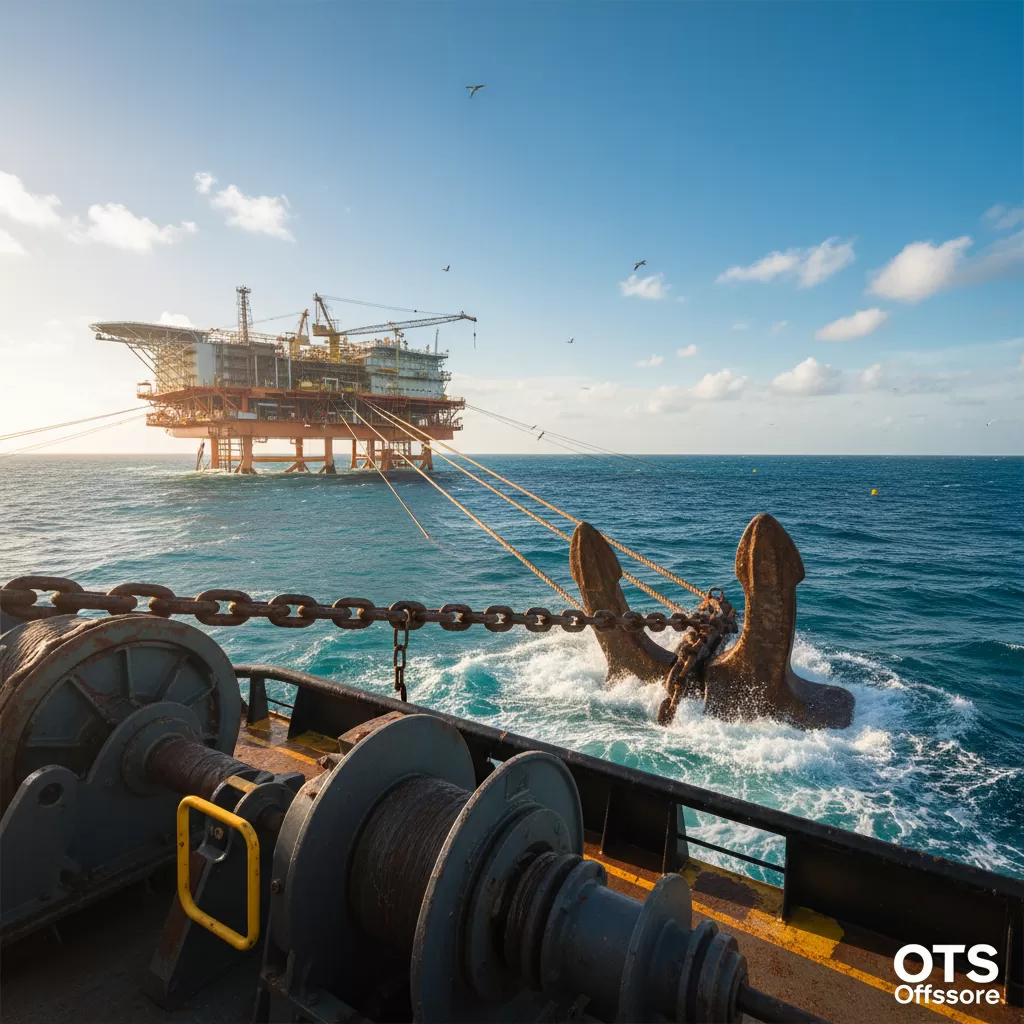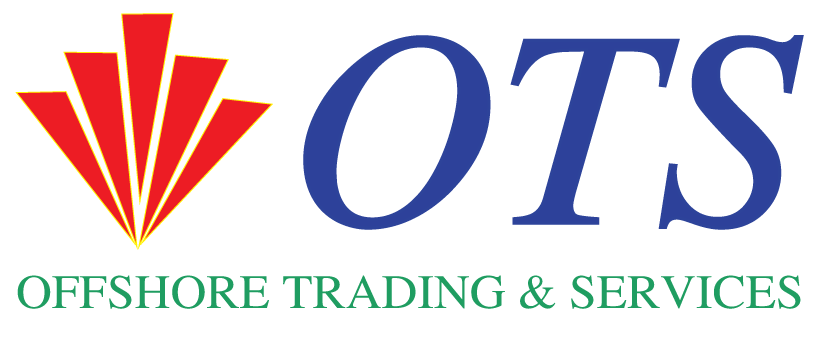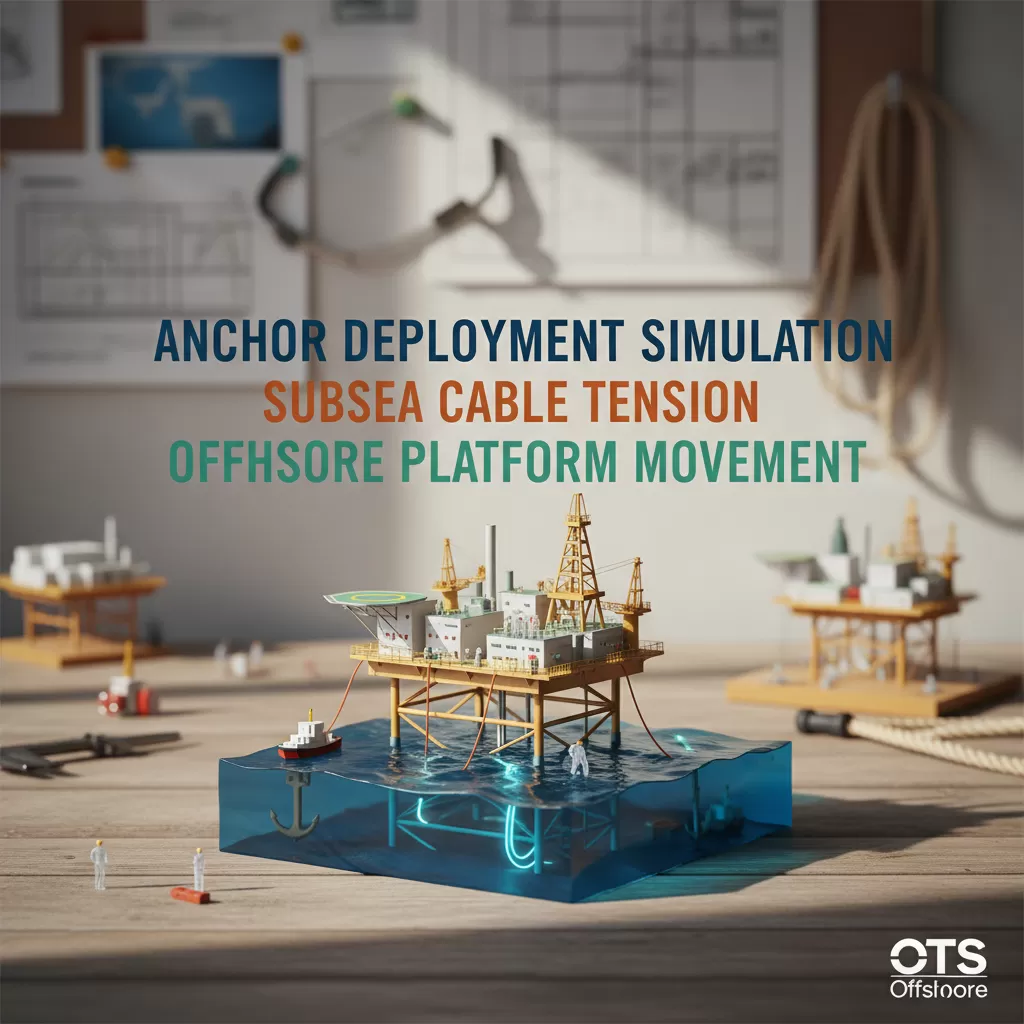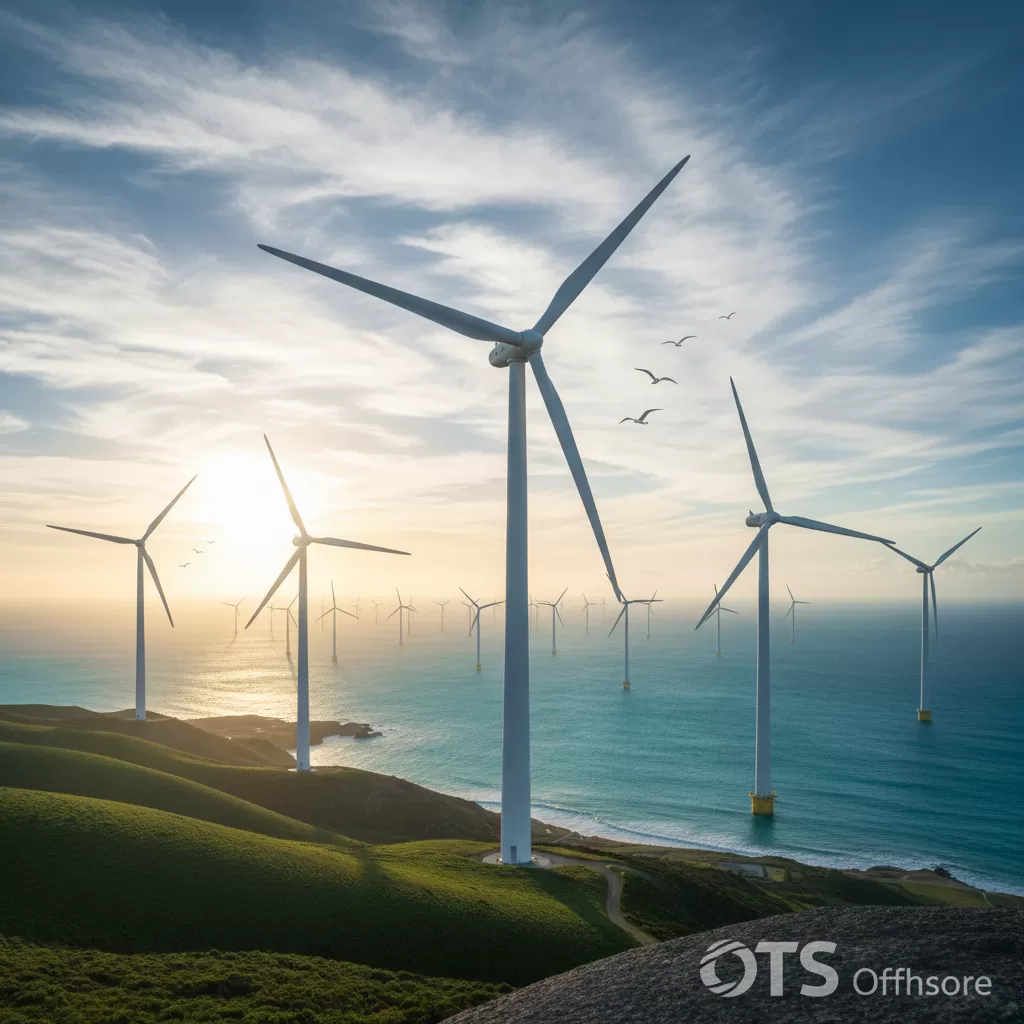This article delves into the intricate aspects of designing and operating mooring systems and equipment crucial for the stability and functionality of offshore structures. It explores fundamental principles, key components, operational challenges, and technological advancements that ensure the safe and efficient deployment of these vital marine assets.
The Critical Role of Design and Operation Mooring for Offshore Structures
The efficacy and longevity of any offshore structure, from production platforms and floating storage units to subsea facilities and mobile drilling rigs, are fundamentally dependent on the integrity of its mooring system. A well-engineered and meticulously operated mooring system is not merely an ancillary component but a cornerstone of operational safety, environmental protection, and economic viability in the challenging offshore environment. Understanding the nuances of design operation mooring is paramount for engineers, operators, and project stakeholders. This encompasses the selection of appropriate mooring configurations, the specification of high-performance mooring components, and the implementation of robust operational procedures to mitigate risks associated with harsh weather, fatigue, and external forces. The intricate interplay between design considerations and operational realities dictates the overall resilience and performance of these complex marine installations.
Understanding the Fundamentals of Offshore Mooring Systems
At its core, an offshore mooring system is designed to anchor a floating or submerged structure to a fixed point on the seabed, or to other structures, thereby restraining its movement within predefined limits. This restraint is essential to maintain the structure’s position relative to wells, pipelines, or other subsea infrastructure, and to withstand the dynamic forces exerted by wind, waves, and currents. The principles governing mooring design are rooted in mechanics and materials science, focusing on load balancing, fatigue analysis, and the long-term behavior of mooring lines and their anchor points. The forces acting on an offshore structure are a complex summation of environmental loads, operational loads, and the static weight of the structure itself. The mooring system must be engineered to safely transfer these loads to the seabed without compromising the structural integrity of either the structure or the seabed.
Key Components of a Typical Mooring System
A comprehensive mooring system comprises several critical components, each playing a distinct role in ensuring the overall stability and functionality of the offshore installation. The selection and integration of these components are central to effective design operation mooring.
– Mooring Lines: These are the primary tension members connecting the offshore structure to the seabed anchors. They can be constructed from various materials, including steel wire rope, synthetic fiber ropes (such as polyester, polypropylene, or aramid fibers), or chains. The choice of material is dictated by factors such as required strength, fatigue resistance, cost, weight, and environmental considerations. Different configurations exist, including catenary, taut leg, and spread mooring systems, each offering specific advantages depending on the application and environmental conditions. The design of mooring lines must account for static and dynamic tensions, abrasion, corrosion, and potential exposure to marine growth.
– Connectors and Terminations: These are essential for joining mooring lines to the structure, to other mooring lines, and to anchors. Common types include shackles, swivels, thimbles, sockets, and specialized connectors like Stud Link Chains (SLC) and Open Turnbuckles. The strength, durability, and reliability of these components are critical, as they represent potential failure points within the system. Proper material selection and fabrication quality control are paramount to ensure they can withstand the demanding loads and corrosive marine environment.
– Anchors: These devices secure the mooring lines to the seabed. The type of anchor selected depends heavily on the seabed conditions, the required holding capacity, and the type of structure being moored. Common anchor types include:
– Drag Embedment Anchors (e.g., Piles, V-flukes, Stevpris): These are typically embedded into the seabed by being pulled through the sediment by the mooring line.
– Gravity Anchors: These rely on their own weight and seabed friction to provide holding power.
– Pile Anchors: These are driven or drilled into the seabed to provide significant holding capacity.
– Suction Anchors (or Piles): These are installed by creating a negative pressure differential, drawing them into the seabed. The choice of anchor significantly influences the overall footprint and installation complexity of the mooring system.
– Buoys and Depressors (where applicable): In certain configurations, buoys may be used to adjust the buoyancy and angle of mooring lines, particularly in deepwater applications. Depressors, conversely, are used to increase the scope (the ratio of mooring line length to water depth) by adding weight to the mooring line, thereby improving its stiffness and reducing the seabed footprint.
– Fairleads and Chocks: These are deck fittings on the offshore structure that guide the mooring lines and reduce chafing as they pass from the seabed to the winches or mooring machinery. Their design must prevent excessive wear and tear on the mooring lines.
– Mooring Machinery: This typically includes winches, capstans, and associated power units (hydraulic or electric) used for deploying, tensioning, and retrieving mooring lines. The capacity and control systems of this machinery are vital for managing mooring line tensions during normal operations and extreme weather events.

Design Considerations for Enhanced Mooring System Performance
The design phase is where the foundation for a reliable and robust mooring system is laid. Effective design operation mooring requires a holistic approach, considering not just the static loads but also the dynamic responses of the structure and the mooring system to a myriad of environmental and operational forces. This phase involves a detailed assessment of the intended operational life of the structure and the associated risks.
Environmental Load Analysis
A thorough understanding of the environmental conditions at the deployment site is foundational. This includes:
– Wave Loads: The forces exerted by waves, including their height, period, and directionality, are critical. These loads are often dynamic and can induce significant fatigue on mooring components.
– Current Loads: The drag forces imposed by ocean currents, which can vary with depth, must be accurately quantified.
– Wind Loads: Wind exerts significant forces on the exposed parts of an offshore structure, contributing to the overall tension in the mooring lines.
– Tidal Loads: The periodic rise and fall of sea levels can influence mooring line tensions, particularly in shallower waters.
– Marine Growth: Accumulation of marine organisms on mooring lines and structures can alter their hydrodynamic properties and increase their weight, impacting tension calculations.
– Seabed Conditions: The geotechnical properties of the seabed are crucial for anchor selection and design, influencing holding capacity and potential for scour.
Structural Analysis and Stability
The mooring system’s design must ensure that the offshore structure remains within its acceptable operational limits for position and heading. This involves:
– Station Keeping: Maintaining the structure’s position within a defined watch circle to ensure continued connection to subsea infrastructure or operational areas.
– Motion Analysis: Understanding and mitigating excessive heave, pitch, roll, and yaw motions that could impact operations or structural integrity.
– Load Combinations: Considering various realistic combinations of environmental and operational loads to determine the maximum expected forces on the mooring system.
– Fatigue Analysis: Predicting the cumulative damage to mooring components over their intended service life, especially due to cyclic loading from waves and vessel motions.
Material Selection and Component Specification
The choice of materials and the specification of individual components are driven by performance requirements, durability, and cost-effectiveness.
– Strength Requirements: Mooring lines and connectors must be adequately rated to withstand the calculated maximum loads with appropriate safety factors.
– Corrosion Resistance: The marine environment is highly corrosive, necessitating the use of materials with excellent resistance to seawater, such as specialized steel alloys, high-performance synthetic fibers, and appropriate protective coatings.
– Abrasion Resistance: Mooring lines can experience significant abrasion against the seabed, other components, or the structure itself. Materials and designs must minimize this wear.
– Fatigue Life: Components are selected to achieve the required fatigue life based on predicted loading cycles.
– Cost-Effectiveness: Balancing performance requirements with budget constraints is an essential aspect of practical design.
Mooring System Configurations
The selection of a mooring system configuration is a critical decision with long-term operational implications.
– Catenary Mooring: This classic configuration uses long mooring lines with a natural sag, where the anchor is at the seabed and the line runs to the vessel. It offers flexibility but can require a larger footprint and may be less suitable for deep water.
– Taut Leg Mooring: In this configuration, mooring lines are kept under significant pretension, reducing vessel excursion and motion. This is often achieved using stiffer lines and more powerful winches, and can be beneficial for deepwater applications and when precise station-keeping is required.
– Spread Mooring: This involves multiple mooring lines radiating from the structure, providing multi-directional restraint. The number and arrangement of lines are optimized to balance loads and minimize vessel motion.
– Single Point Mooring (SPM): This system allows a vessel to rotate around a single mooring point, typically used for transfer operations like loading or discharging cargo.
– Turret Mooring: Similar to SPM, but the mooring system is integrated into a turret structure on the vessel, offering enhanced stability and operational flexibility.
Operational Aspects of Mooring Systems and Equipment
Once designed and installed, the effective operation and maintenance of mooring systems are paramount to ensuring their continued safety and performance throughout the structure’s lifecycle. Effective design operation mooring extends beyond the initial installation to encompass ongoing management.
Installation and Commissioning
The process of installing mooring systems is complex and requires specialized vessels and expertise.
– Anchor Handling Operations: Precise positioning and deployment of anchors, often in challenging seabed conditions.
– Mooring Line Laying and Connection: Carefully laying out and connecting mooring lines to the structure, ensuring proper tensioning.
– Pre-tensioning and Load Testing: Applying initial tension to mooring lines and conducting load tests to verify their integrity and the system’s performance under design loads.
– Commissioning Surveys: Thorough inspections and surveys to confirm that the system meets all design specifications and safety standards before commencing operations.
Routine Monitoring and Inspection
Continuous monitoring and regular inspections are vital for early detection of potential issues.
– Visual Inspections: Regular visual checks of mooring lines, connectors, fairleads, and anchors for signs of wear, corrosion, damage, or marine growth.
– Tension Monitoring: Utilizing load cells and tension monitoring systems to track mooring line tensions and identify any anomalies.
– Position Monitoring: Employing GPS or other positioning systems to continuously track the structure’s location and ensure it remains within acceptable limits.
– Underwater Inspections: Utilizing Remotely Operated Vehicles (ROVs) or divers for detailed inspections of submerged components, including anchors and the seabed around them.
– Non-Destructive Testing (NDT): Employing techniques like ultrasonic testing or magnetic particle inspection to assess the internal integrity of mooring components.
Maintenance and Repair
Proactive maintenance and prompt repair of any identified issues are crucial to prevent minor problems from escalating.
– Lubrication and Cleaning: Regular lubrication of moving parts in mooring machinery and cleaning of mooring lines to remove debris and marine growth.
– Replacement of Worn Components: Timely replacement of mooring lines or connectors that show significant wear or damage, based on inspection findings and remaining life assessments.
– Repair of Corrosion: Addressing any signs of corrosion through cleaning, re-coating, or replacement of affected components.
– Anchor Management: Inspecting anchor points for signs of seabed movement, scour, or uplift, and taking corrective actions as necessary.
Emergency Procedures and Response
Having well-defined emergency procedures is critical for responding to extreme weather events or system failures.
– Storm Planning: Developing procedures for increasing mooring line tensions, disconnecting certain lines if necessary, or evacuating personnel in anticipation of severe weather.
– Load Shedding: Strategies for selectively releasing tension or disconnecting mooring lines in extreme overload scenarios to prevent catastrophic failure.
– Contingency Planning: Establishing plans for temporary repairs, backup systems, or alternative mooring solutions in case of component failure.

Advancements in Mooring System Technology
The offshore industry is continuously evolving, with ongoing advancements in mooring system design and operation aiming to improve efficiency, safety, and environmental performance.
Innovative Mooring Line Materials
The development of advanced synthetic fiber ropes, such as HMPE (High Modulus Polyethylene) and Aramid fibers, has offered significant advantages over traditional steel wire ropes.
– Lighter Weight: These materials are significantly lighter, reducing top weight on structures and simplifying handling.
– Higher Strength-to-Weight Ratio: They offer comparable or superior breaking strengths to steel at a fraction of the weight.
– Excellent Corrosion Resistance: They are inherently resistant to corrosion and do not suffer from the same fatigue issues as steel wire ropes.
– Reduced Environmental Impact: Their lighter weight can lead to reduced installation vessel requirements and associated emissions.
Advanced Anchor Designs
New anchor designs are being developed to improve holding capacity, simplify installation, and reduce seabed disturbance.
– Suction Pile Technology: Improved designs and installation techniques for suction piles offer reliable anchoring in a wide range of soil conditions, particularly in deep water.
– Advanced Drag Embedment Anchors: Innovations in fluke geometry and material strength have enhanced the penetration and holding capacity of drag embedment anchors.
Smart Mooring Systems and Digitalization
The integration of sensor technology and digital platforms is transforming mooring system management.
– Real-time Monitoring: IoT sensors embedded within mooring components provide continuous data on tension, strain, vibration, and environmental conditions.
– Predictive Analytics: Advanced algorithms analyze monitoring data to predict potential failures and optimize maintenance schedules, moving towards predictive maintenance rather than reactive repairs.
– Digital Twins: Creating virtual replicas of mooring systems allows for simulation of various scenarios, performance optimization, and risk assessment without impacting the physical asset.
– Remote Operations: Enabling remote monitoring and control of mooring machinery, enhancing operational efficiency and safety.
Deepwater and Ultra-Deepwater Mooring Solutions
As exploration and production move into deeper waters, mooring systems face increased challenges.
– Dynamic Positioning (DP) assisted mooring: Combining DP capabilities with mooring systems to enhance station-keeping in very deep waters.
– Hybrid Mooring Systems: Utilizing combinations of different mooring line types and anchor technologies to optimize performance in deep and ultra-deep environments.
– Advanced Buoyancy and Tensioning Systems: Innovations in buoyancy aids and active tensioning systems to manage the long mooring lines and dynamic forces in deepwater.
The continuous pursuit of innovation in design operation mooring is essential to meet the evolving demands of the offshore energy sector. As structures are deployed in increasingly challenging environments, the reliability, efficiency, and sustainability of their mooring systems will remain a critical determinant of their success.








